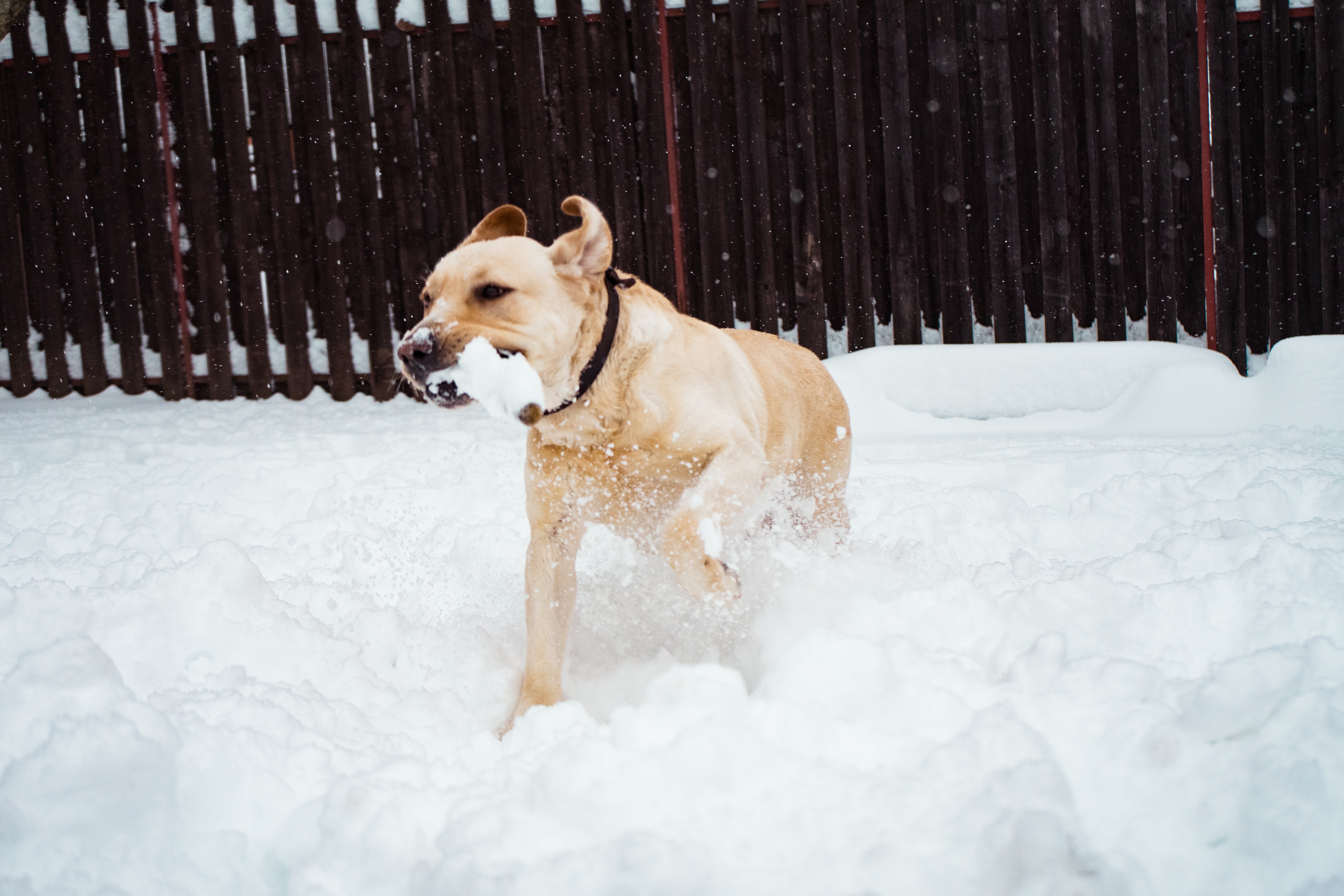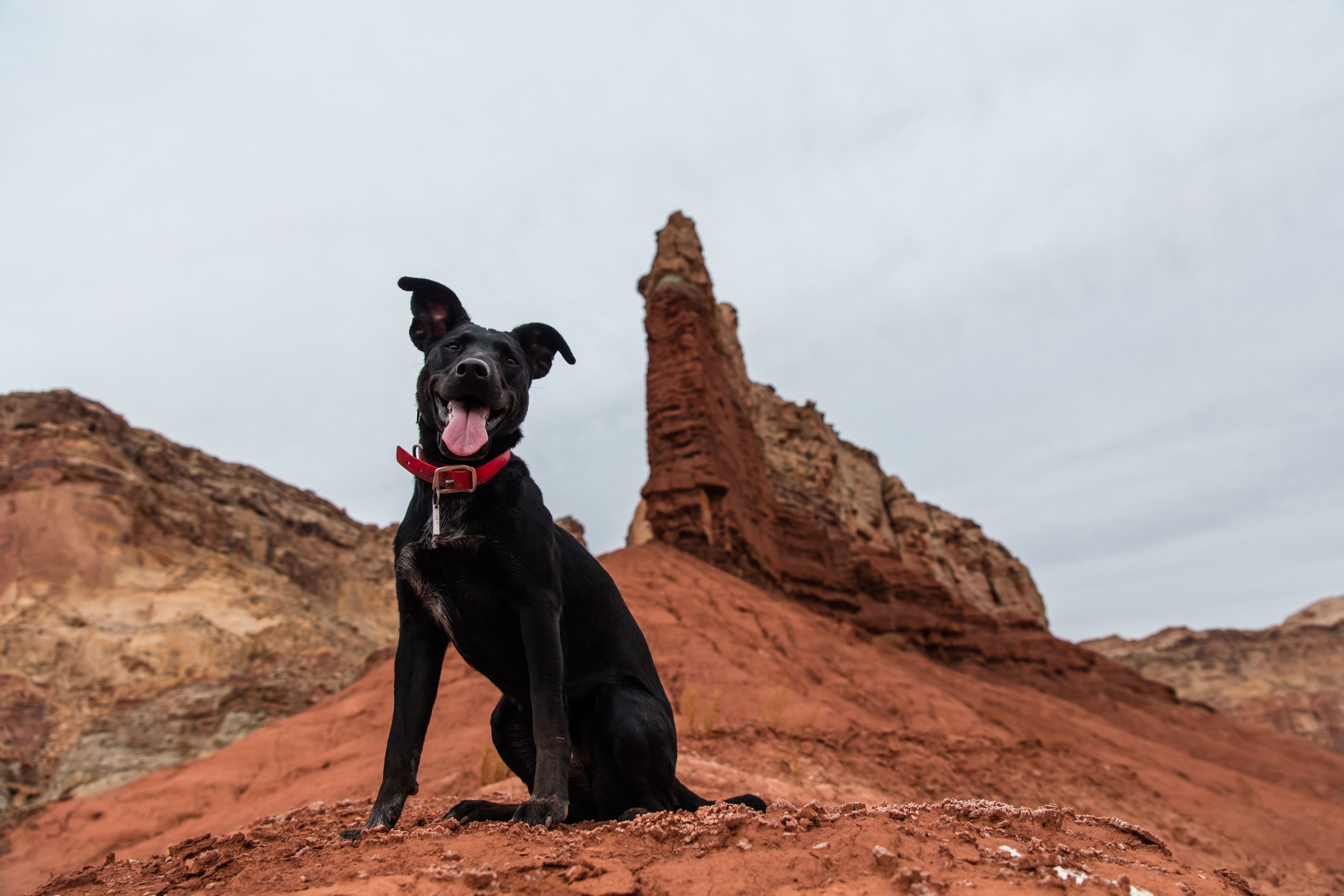As a dog owner, there can be times when it would be very helpful to have your dog off leash, while still having the training to return back to you at a moment’s notice. However, teaching your dog how to train a dog to be off leash is no easy practice.
Most dogs who are untrained will take off the second they are free from the restraint of their leash. Once a pup has been taught how to behave, they will hopefully be able to obey your verbal cues and return to you as soon as they are called. For pet owners interested in how to train a dog off leash, this guide will introduce a number of the key topics to be mindful of when training your pet.
Training a Dog to Be Off Leash: The Basics
Training a dog to be off leash can be a daunting task. While there are some potential risks of letting an untrained dog go off leash, it can also be a true testament of his training. Getting a dog to behave off leash is a process that requires dedication, consistency, and time to be successful. Below are a handful of the most vital elements of how to train a dog to be off leash.
 Master Basic Commands on Leash
Master Basic Commands on Leash
The first step to training a dog to be off leash successfully is instilling in them a strong understanding of basic commands and building the bond and trust between the owner and the animal. If a dog does not follow basic commands when he is on a leash, he will not be responsive to commands when he is surrounded by temptation of the outside world. It is important to start with the basic dog training tricks and build on those to tackle more complicated commands, such as a recall off leash.
To accomplish this, it can be helpful to enroll in an obedience course to establish basic training commands in a group environment. A class will also expose the dog to have to follow commands even when they are in the presence of new people and other animals.
In addition to a basic obedience course, it is vital to train consistently and reinforce the commands, even if it is just for fifteen minutes a day. Some dogs rely on positive reinforcement in the form of praise while others are more responsive to treats. This is just one example of information that is useful and beneficial to know prior to beginning off-leash training. Once a dog has mastered basic commands and has a foundation of trust with his owner, the next step is to begin working on off-leash training while they are still in a controlled and safe environment, such as at a dog training facility or in a backyard.
Introduce Off Leash Training in a Controlled Environment
Training a dog to reliably and consistently respond to commands develops over time. As they work with their owner and begin to understand the concept of positive reinforcement, they begin to understand which behaviors are acceptable and which are not. Over time, a dog should be able to respond automatically when he hears a command he has already been taught.
To train a dog to be off leash, it is important to test their reliability and consistency in following basic commands while they are still in a controlled environment. For example, if your dog is in a fenced-in backyard and takes off the second he is let off his leash when you cue “stay”, that should be a sign to the owner that their pet needs to continue working on that command.
Once the owner has selected a controlled environment, they should run through a training routine as they normally would, but this time with their dog off leash. If a dog has the foundational training they need to be off leash, they should follow all of the commands as they would on a leash. It is helpful to keep the leash close by so that it can be grabbed if needed. If the dog is following commands consistently off leash, the next step is to begin training them to have a reliable recall.
Train a Reliable Recall
 One of the most important commands for a dog to know if they are going to be off leash is a recall, which means that when the owner calls for the dog, he will run back without hesitation. Many owners use the command “Come” to recall their dogs back to them. While this seems like a simple command, it can be difficult to master in practice and requires patience, consistency, and dedication. The desired end result is when the owner says, “Come”, the dog immediately stops whatever he is doing and runs back. But how does an owner achieve a reliable and instantaneous recall?
One of the most important commands for a dog to know if they are going to be off leash is a recall, which means that when the owner calls for the dog, he will run back without hesitation. Many owners use the command “Come” to recall their dogs back to them. While this seems like a simple command, it can be difficult to master in practice and requires patience, consistency, and dedication. The desired end result is when the owner says, “Come”, the dog immediately stops whatever he is doing and runs back. But how does an owner achieve a reliable and instantaneous recall?
To work up to the desired recall, it’s helpful to start small. Be sure to work on recalls in a safe and controlled environment, just as with the step above. Start by letting the dog go a short distance away from the owner and then call them to return back. When they return back to you successfully, be sure to give them positive reinforcement to signal that they are doing the right thing.
Positive reinforcement helps the dog see that behaving his master will result in a reward (ie. treats, praise, etc.). The goal is to have the dog understand that coming back to their owner is a good thing, rather than a command they may or may not want to follow. Make sure that the “Come” command is reserved for recalls and not for signaling the end of activities they enjoy, such as the end of a playdate, as this will associate a negative with the command.
A recall should never be a punishment. As the dog becomes more reliable in responding to the recall, lengthen training sessions and add in an array of training commands that will keep them mentally engaged and responsive throughout each training session. As they continue to improve, increase the distance of the recalls and introduce distractions that will test their attentiveness and force them to block out other people, dogs, and anything else that may compromise their responsiveness to commands.
Some dogs may have a difficult time learning to recall. Below are a handful of common reasons why a dog may not be responding as desired to his recall training.
- They don’t understand what is being asked of them. This can be a simple one to fix as the command that is being given may be too complicated or may be getting confused with another command. Commands should be clear and simple, which is why “Come” is often the chosen recall command. A recall command such as “Come here, boy!” may result in confusion in the dog. Another potential issue can be if the owner is varying the command used for the recall, even slightly. Such as by using “Come” and then “Come here” the next time. If the command is clear and the dog is still not responding, it may be best to go back to basics and continue working on their foundational obedience commands off leash before circling back to the recall.
- They don’t care to follow the command. While this one can seem like it would be challenging to remediate, by simply introducing a more valued reward, many dogs will begin to care and respond accordingly. If a dog doesn’t love chicken but it rewarded with bits of chicken when they respond to a recall, then they may not be inclined to respond all of the time. However, if they love their favorite fox toy more than anything, being rewarded with their fox for a successful recall may change the way they think about and respond to the command. As a dog’s training progresses, they should follow the command given regardless of the reward they receive at the end, it should be instinct and habit. You may not always have a treat or a toy to reward them with, so eventually, they should be responding without needing a high value treat to persuade them.
- They are afraid or nervous to come back to their owner. As stated above, it is important that a recall never results in punishment. Dogs should be rewarded with positive reinforcement when they successfully follow the recall command. If a dog is being scolded or punished, they may become afraid and nervous, which can negatively impact their willingness and desire to follow the recall command. Positive reinforcement will help strengthen the bond between the owner and the dog. For a pup to be off leash in a safe manner, there has to be a strong bond and trust with their human owner.
If a dog is still not following the recall command, it can be helpful to have a training session with a professional trainer to identify potential issues that may be occurring.
Train Safety Commands
In addition to training a dog to respond to a recall, it is also vital to train them on other safety commands and to ensure that they will follow those cues even when they are off leash. Invaluable safety commands for a dog to know are “Leave it”, “Off”, and “Down”. When a dog is off leash, it isn’t always practical for their owner to reach them quickly, which is why it is vital for them to follow commands even when they are given at a distance.
If a dog is about to run over to an aggressive dog or eat something that could be poisonous, “Leave it” may be the best way to keep them safe. If a dog is about to climb on something it shouldn’t, “Off” will keep them in check from a distance. When a dog is off leash, these safety commands can help an owner keep their dog safe from potential danger even when they are at a distance.
While it does require hard work and consistency, training a dog to be off leash can be a valuable and rewarding experience for both the owner and the dog.
Sources:
Siler, Wes. “Train Your Dog to Walk Off-Leash.” Outside Magazine, 15 Aug. 2017, www.outsideonline.com/2201211/how-train-your-dog-walk-leash.
Richmond, Mardi. “Building Off-Leash Reliability.” Whole Dog Journal, 1 Mar. 2002, www.whole-dog-journal.com/issues/5_3/features/Building-Off-Leash-Reliability_5440-1.html.
Nicholas, Jason. “6 Tips for Taking Your Dog Off Leash.” 6 Tips for Taking Your Dog Off Leash, www.preventivevet.com/dogs/dog-off-leash-training.
Richmond, Mardi. “Building Off-Leash Reliability.” Whole Dog Journal, 1 Mar. 2002, www.whole-dog-journal.com/issues/5_3/features/Building-Off-Leash-Reliability_5440-1.html.




